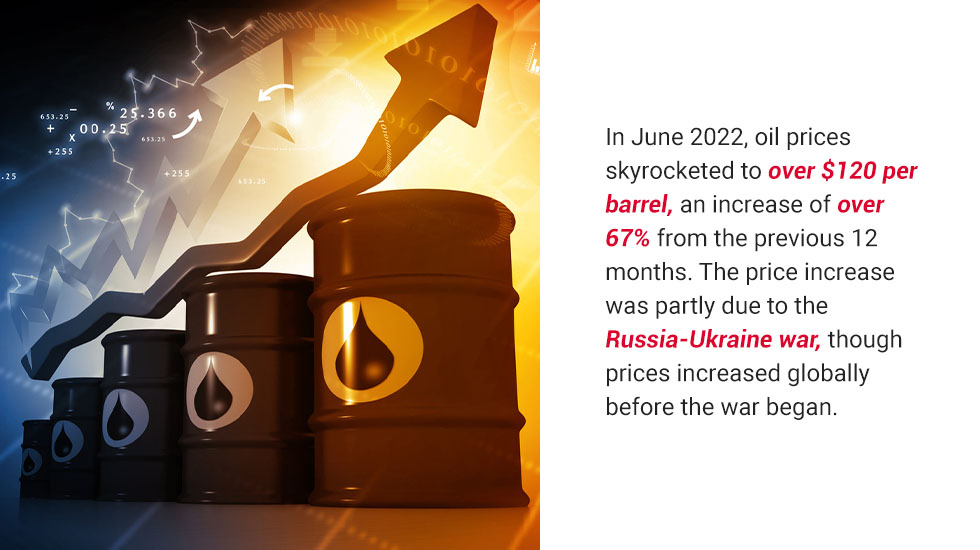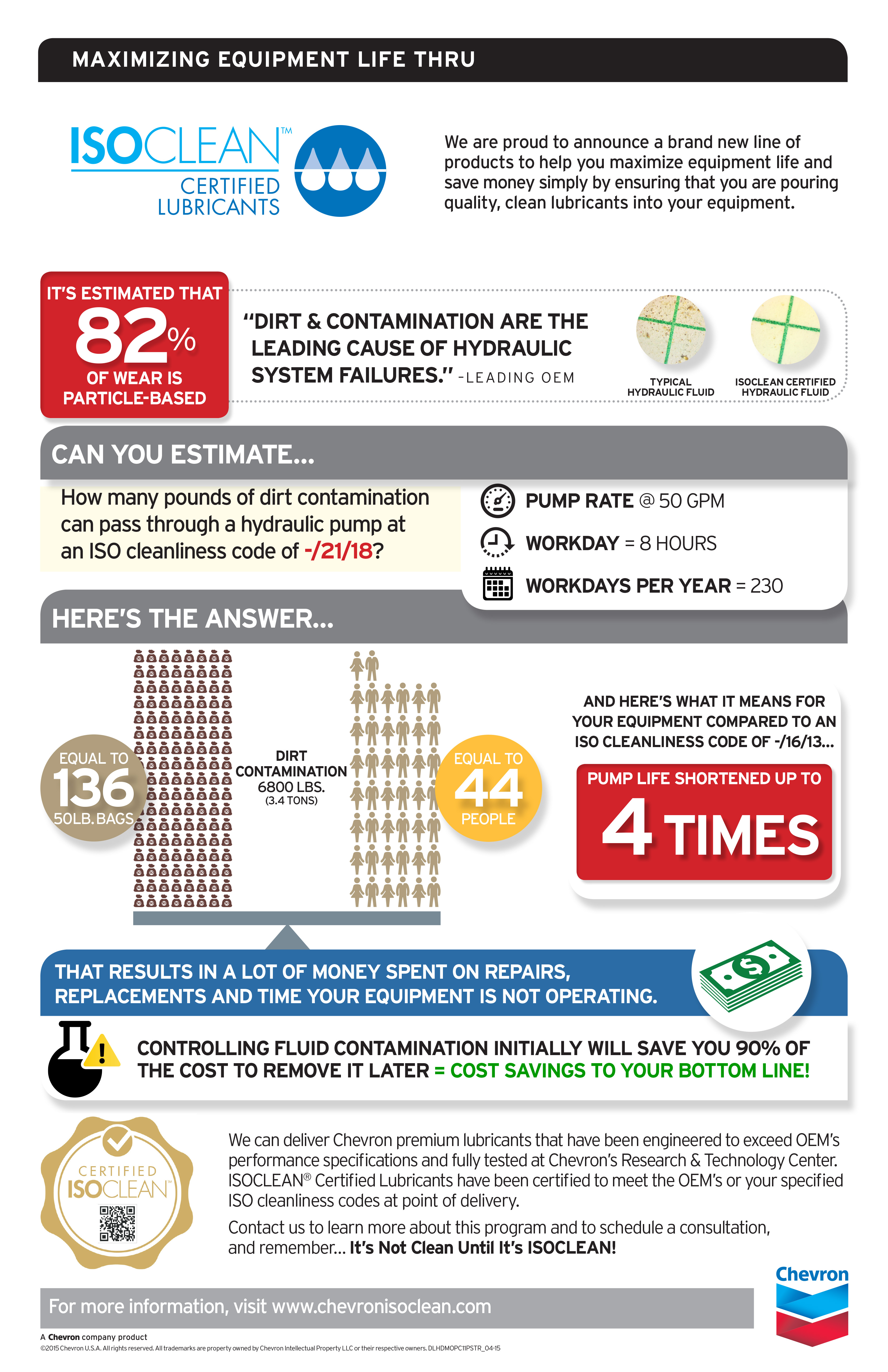Lubricant prices change often due to the oil industry’s complexity and continuous fluctuations. Many factors play a part in motor lubricant prices, including environmental factors, politics, civil unrest, and transportation costs.
Lubricant prices will change in 2023, but what will factor into these changes in the near future? Below, we will explore the relationship between crude oil and lube price increases and the different causes of these price changes.
Where Do Lubricant Prices Come From?
Various factors affect lubricant oil prices, including raw material costs, supply and demand, packaging, transportation costs, and the current price of crude oil:
- Supply and demand: Supply and demand affect every commodity and are one of the main factors that affect lubricant price fluctuations. The less demand there is for lubricants, the lower the prices. Decreased demand can also cause a ripple effect down the supply chain, causing suppliers or refineries to close.
- Production costs: Lubricant producers often have different methods of producing their products. Some producers may use expensive practices or face challenges like power outages or limited storage capacity that could cause them to raise their prices.
- Crude oil prices: Lubricant prices originate from crude oil prices. While there is no direct link, their prices tend to fluctuate similarly. Crude oil prices can even affect synthetic lubricants since manufacturers make them from the byproducts of natural gas or oil.
- Transportation costs: Moving oil across the globe costs money, making transportation costs one of the many factors affecting lubricant pricing. Crude oil’s origin location can significantly impact its transportation costs, depending on how far it has to travel and what mode of transportation it uses. You will also have to account for the transportation price once the final product is complete and on the way to the consumer.
- Supply chain disruptions: Ecological events like hurricanes, blizzards, and earthquakes can disrupt the supply chain by causing damage to refineries and impacting oil access. Political unrest can also cause disruptions to the supply chain. If supply chain disruptions occur when supply is low, prices often increase to compensate for potential losses.
- Commodity futures: Many traders buy into futures contracts for crude oil they will receive in the future. However, some traders do not follow through and take ownership of crude oil, instead selling these contracts for a profit. These market changes can cause the price of crude oil and lubricants to fluctuate.
The United States Energy Information Administration (EIA), reports that the price of oil is made of 61% the cost of crude oil, 15% taxes, 12% distribution and marketing, and 12% refining costs and profits. Over the past 10 years, prices have increased at an average of twice a year and only decreased twice. Producers announce their lubricant prices twice a year, though the exact time can vary. Following this trend of consistent price increases, you can expect official prices to increase in 2023.
However, additional changes can occur during the time between official price changes. These unofficial changes typically follow fluctuations in the prices of lubricants’ base oil, which accounts for 80%-99% of the volume in finished lubricants.
The Great Oil Crash
From 2000 to 2008, there was an unprecedented increase in oil price per barrel, growing from $25 to $150. This increase is attributed to the increase in demand from developing economies like China and India. Around 2010, the demand for oil plateaued but the increased production of oil barrels continued. The price remained around $125 until 2014. The production of oil eclipsed the demand, leading to more oil than the world could use, and the free fall of prices that bottomed out at $40 per barrel.
In 2014, we learned that consumption trends play a huge role in the price of fuel, but it falls back to the fundamental creed of economics: supply vs. demand. When the supply of oil was at an all-time high, the demand was not there to satiate it, hence the drop in price. This is why fuel costs increase during the summer months, while also taking into account that additives such as ethanol and other emission-reducing chemicals factor into the final cost.
Why Are Lubricant Prices Increasing Now?
As the global events of 2020 are starting to level out, prices are beginning to increase. In 2022, the prices of oil and lubricant raised due to increasing demand. In June 2022, oil prices skyrocketed to over $120 per barrel, an increase of over 67% from the previous 12 months. The price increase was partly due to the Russia-Ukraine war, though prices increased globally before the war began.
Prices have continued to increase throughout the year due to the rising costs of raw materials and packaging, which have affected the manufacturing process. The petroleum industry has faced a global imbalance in the supply and demand for raw materials in 2022. While demand has increased, supply chain issues have caused shortages in both lubricant and base oil that make it challenging for manufacturers to keep up.
Transportation costs have also increased throughout 2022, contributing to the price increases we have seen in the last year.
The lubricant market is projected to continue increasing. Many factors that affected prices from 2021 to 2022 continue to disrupt the labor market and supply chain, making it challenging to keep up with demand. Ongoing tension, challenges within the supply chain and rising costs of raw materials contribute to increasing lubricant prices in 2023. Higher crude oil prices impact the lubricant market, causing manufacturers to increase their prices.
Why Lubricant Prices Do Not Match Crude Oil Prices
While lubricant and crude oil prices follow a similar pattern, the same influences do not dictate them. Supply and demand, manufacturing, and transportation are the main influences on lubricant prices, while multiple factors impact crude oil prices, including:
- Supply and demand.
- The U.S. dollar value.
- Commodity markets.
- Transportation requirements.
- Location of origin.
- Oil type.
While you can purchase crude oil directly off the spot market, reported daily prices do not accurately reflect what refineries or customers pay for crude oil — the price per barrel that the news reports is only a benchmark.
Base Oils
Lubricants can be more expensive than crude oil because lubricant manufacturers have more flexibility over their processes and the type of base oils they use to create their products. Base oils are a tiny percentage of what a barrel of crude oil can produce. Different base oils have various characteristics that determine their use, such as thermal stability, viscosity, volatility, and oxidation.
Some manufacturers blend base oils with additives to alter their characteristics and achieve particular specifications. While additives let manufacturers purchase lower-quality base oils, fluctuations in supply and demand can make high-quality oils more affordable or convenient. For example, if a specific lower-quality base oil is in high demand without the supply to meet consumer needs, its cost will significantly increase. In these cases, choosing high-quality base oils in higher supply can be more affordable.
However, substitutions are not always an option since some products require specific base oils to meet formula requirements. For example, some oils have a higher viscosity index (VI) at higher temperatures. Some manufacturer-specified multi-grade engine oils require high-VI base oils for their lubricant formula. Base oils contribute to the finished product’s performance, making it essential for manufacturers to choose one that will help their product meet performance standards.
How to Save Money on Lubricants
The proper lubricant can help you keep your fleet running and maximize its life span, so it’s crucial to find high-quality products for the best price. SC Fuels offers a complete line of bulk lubricants from trusted brands such as Chevron, Valvoline, and Castrol. We are proud of our industry-leading service that prioritizes your safety and our relationship with you.
Our partners know that they are receiving high-quality lubricants every time at some of the best prices on the market. While lubricant demands fluctuate, you can trust SC Fuels to get you what you need when you need it. Contact us to speak to a representative today about our lubricant pricing!










